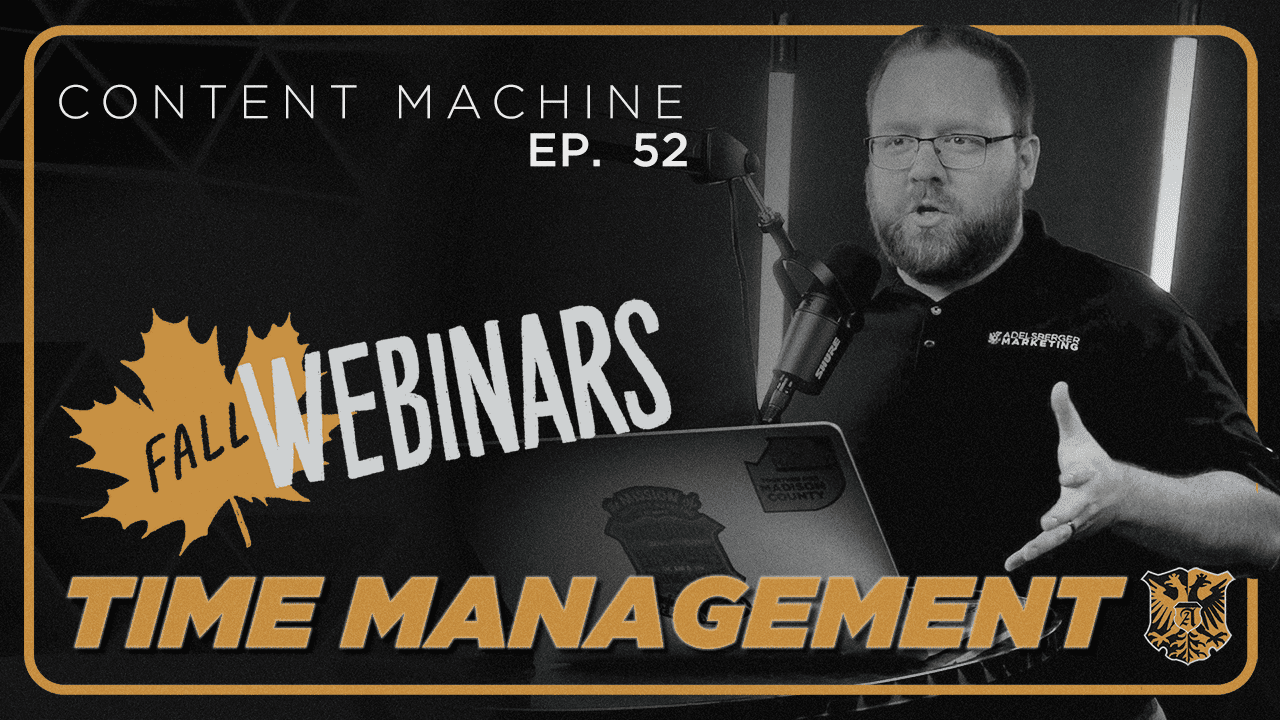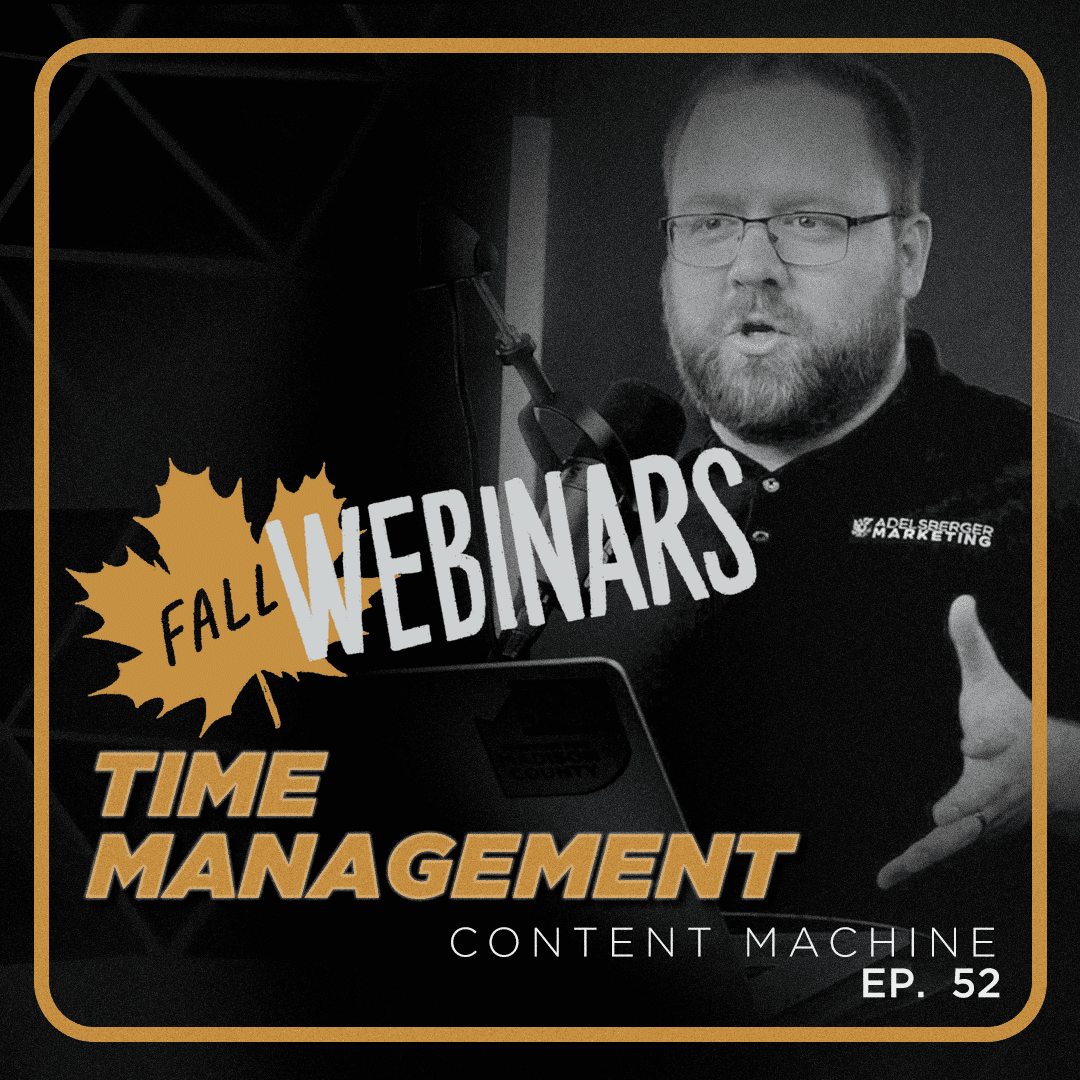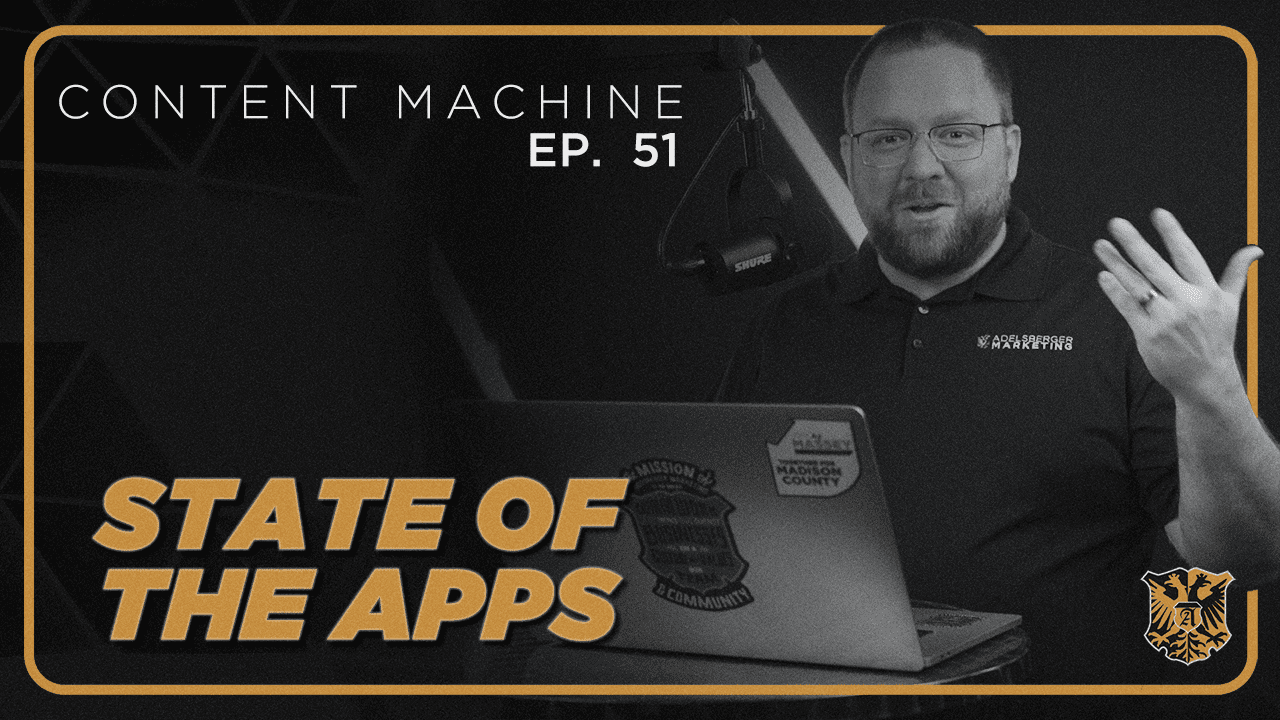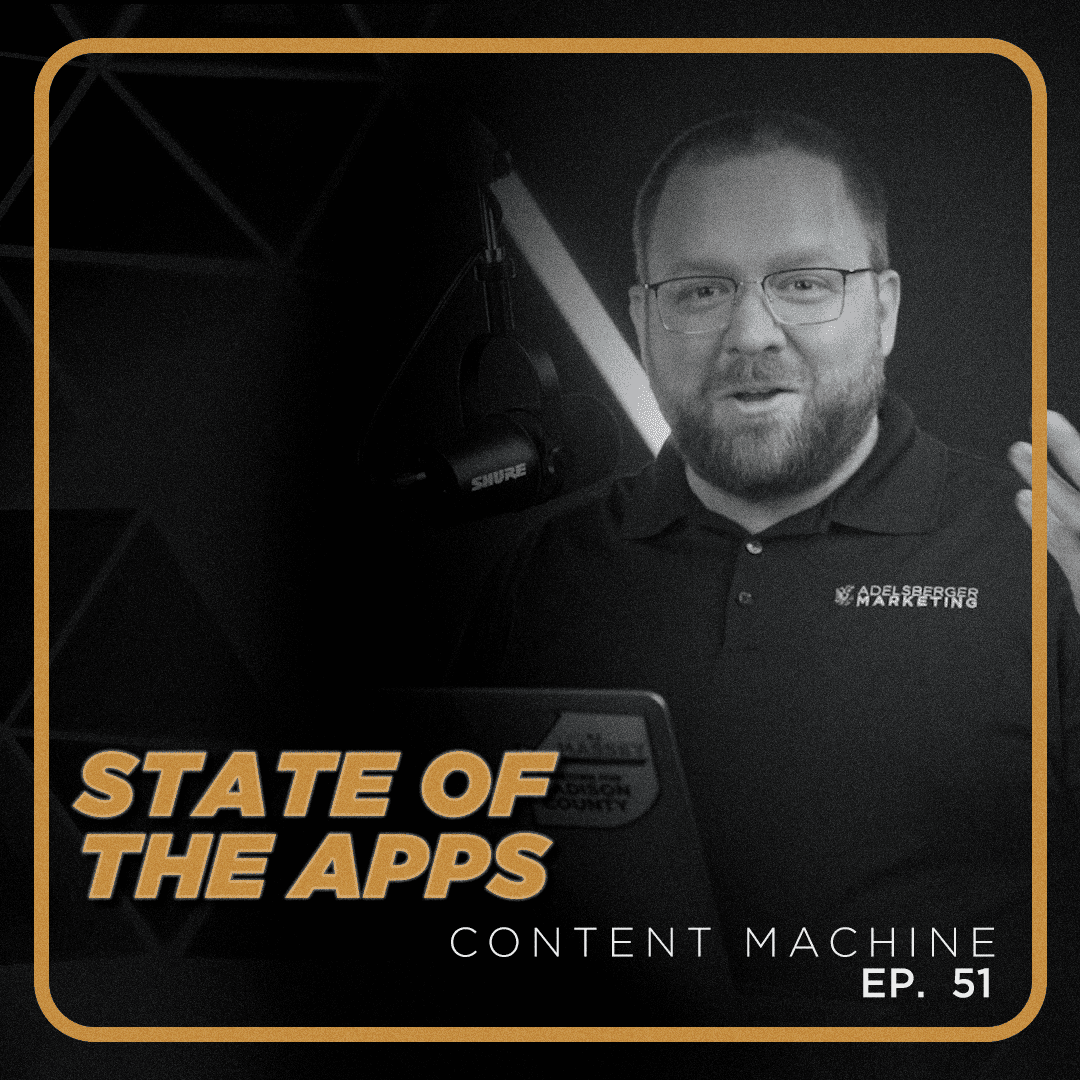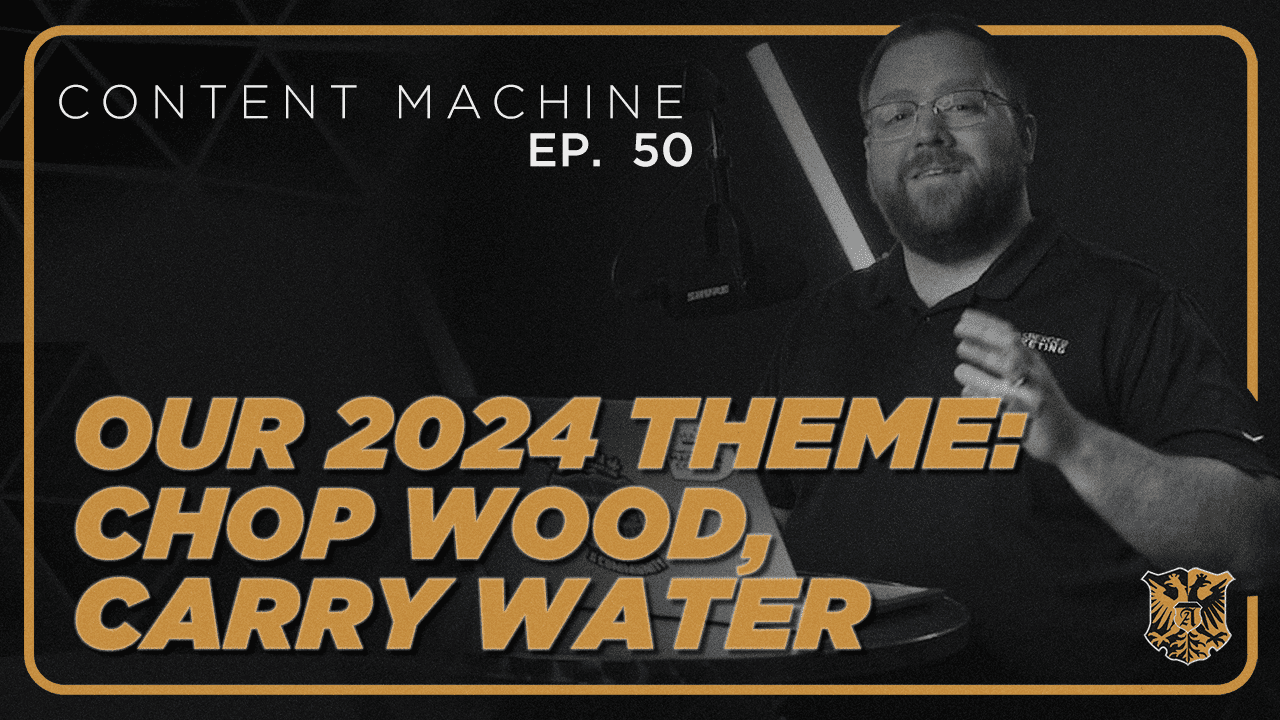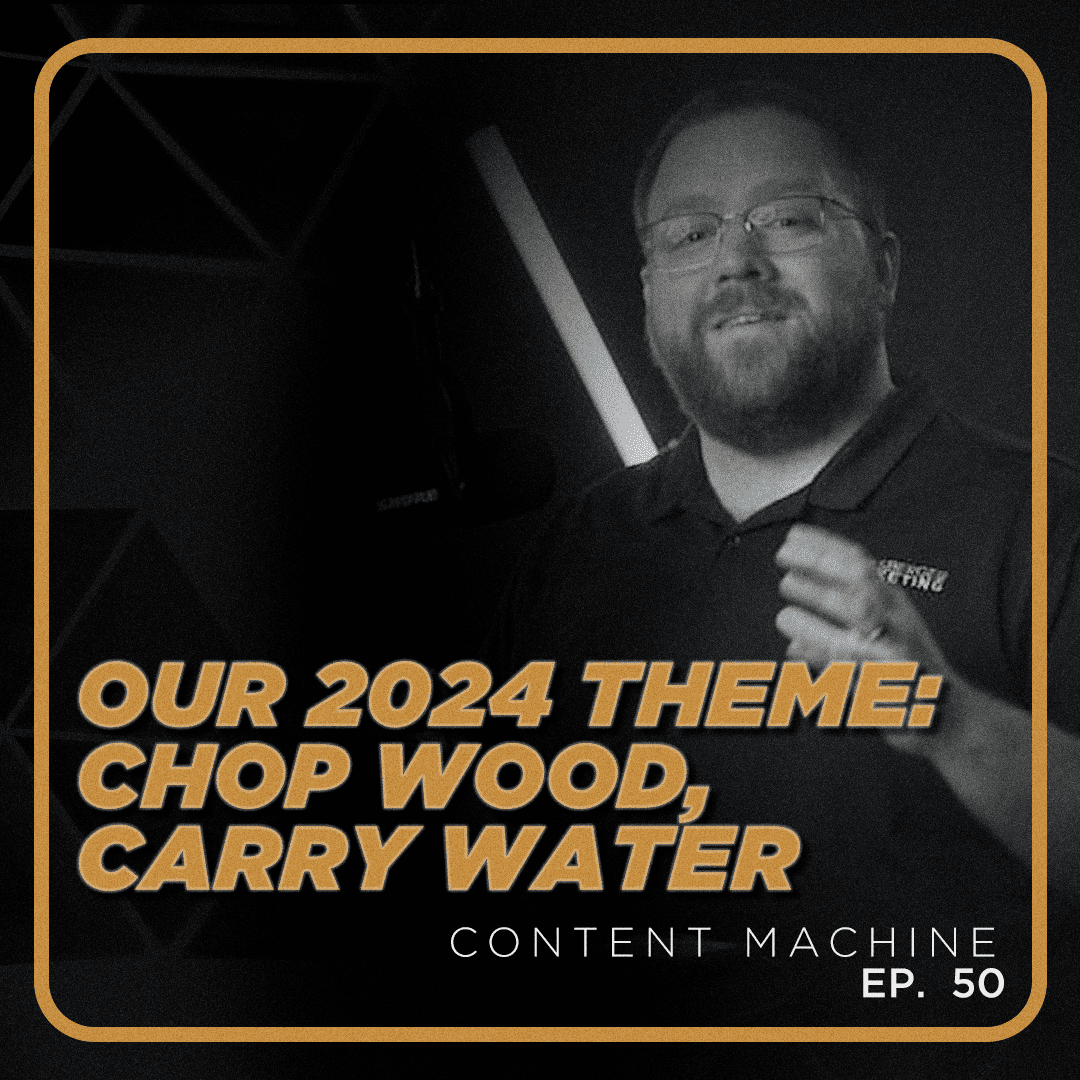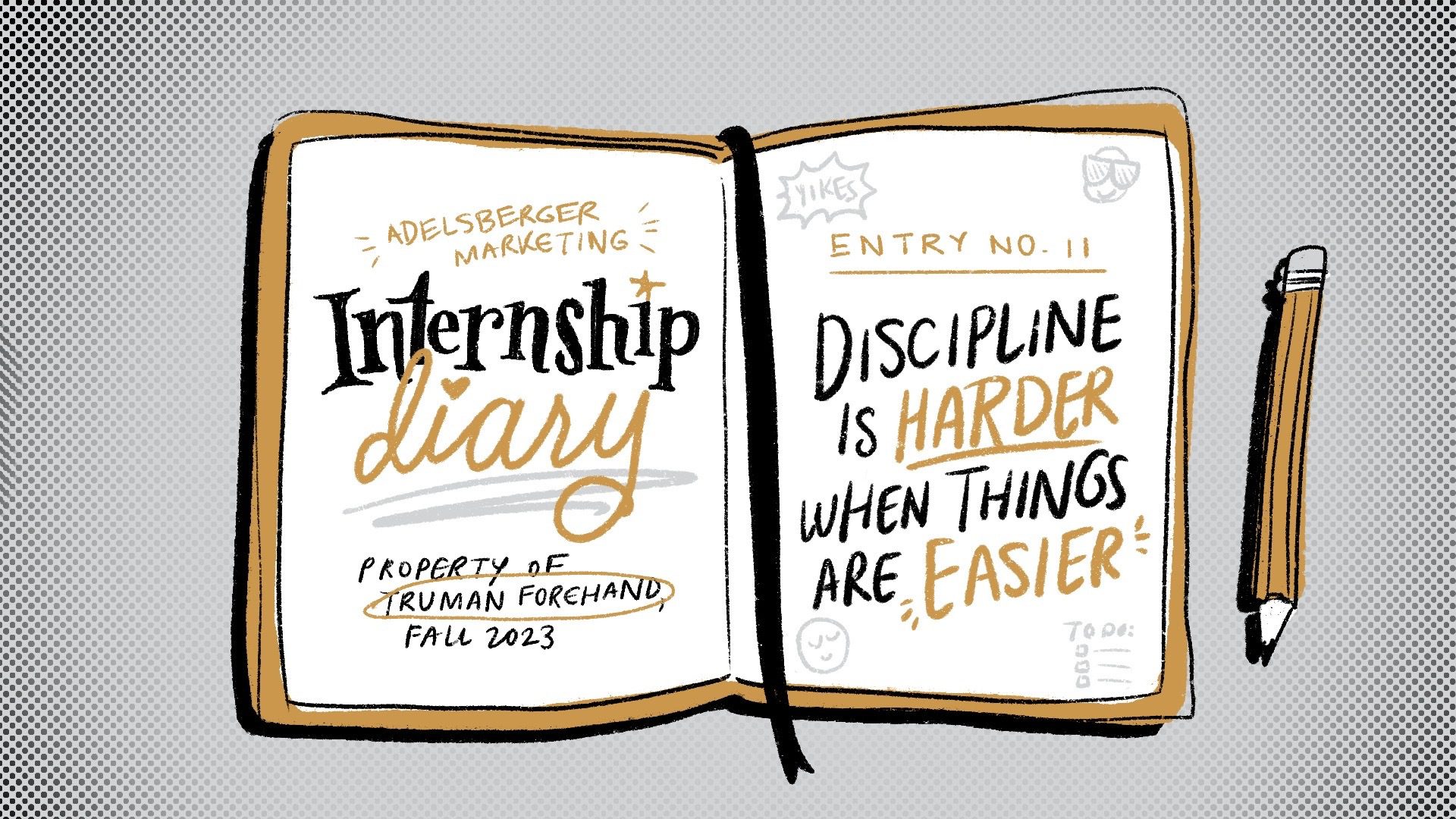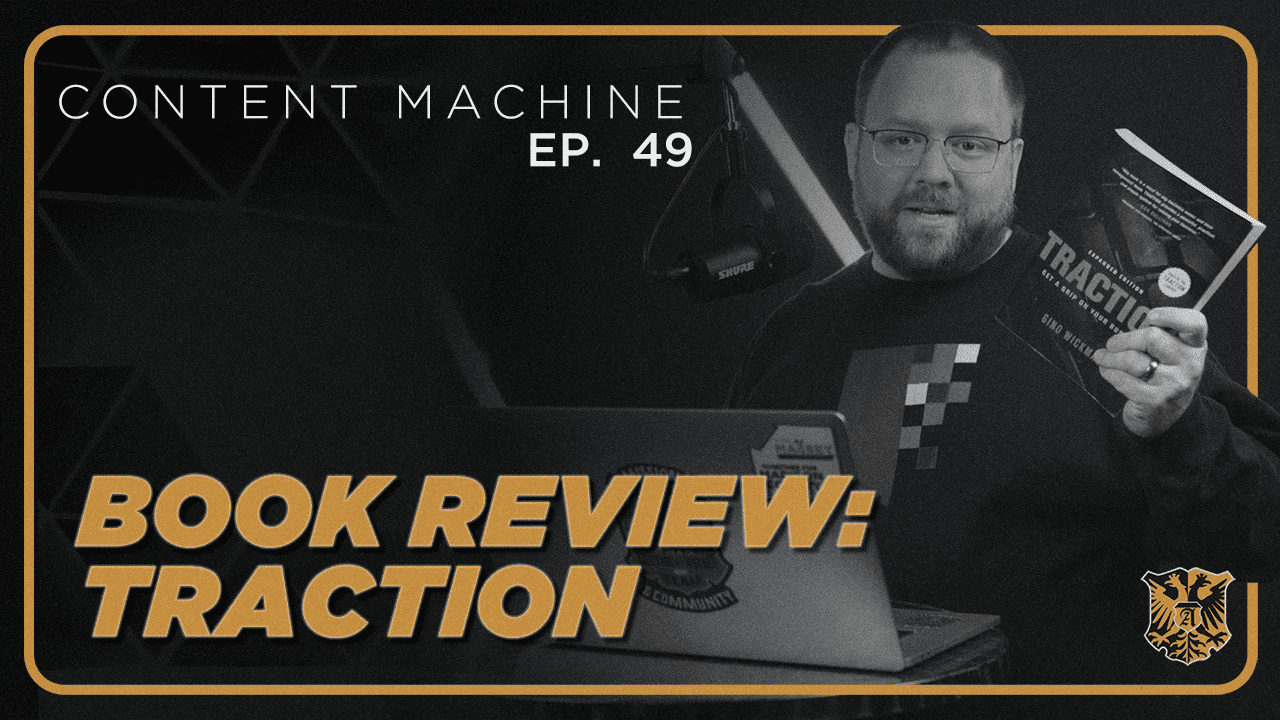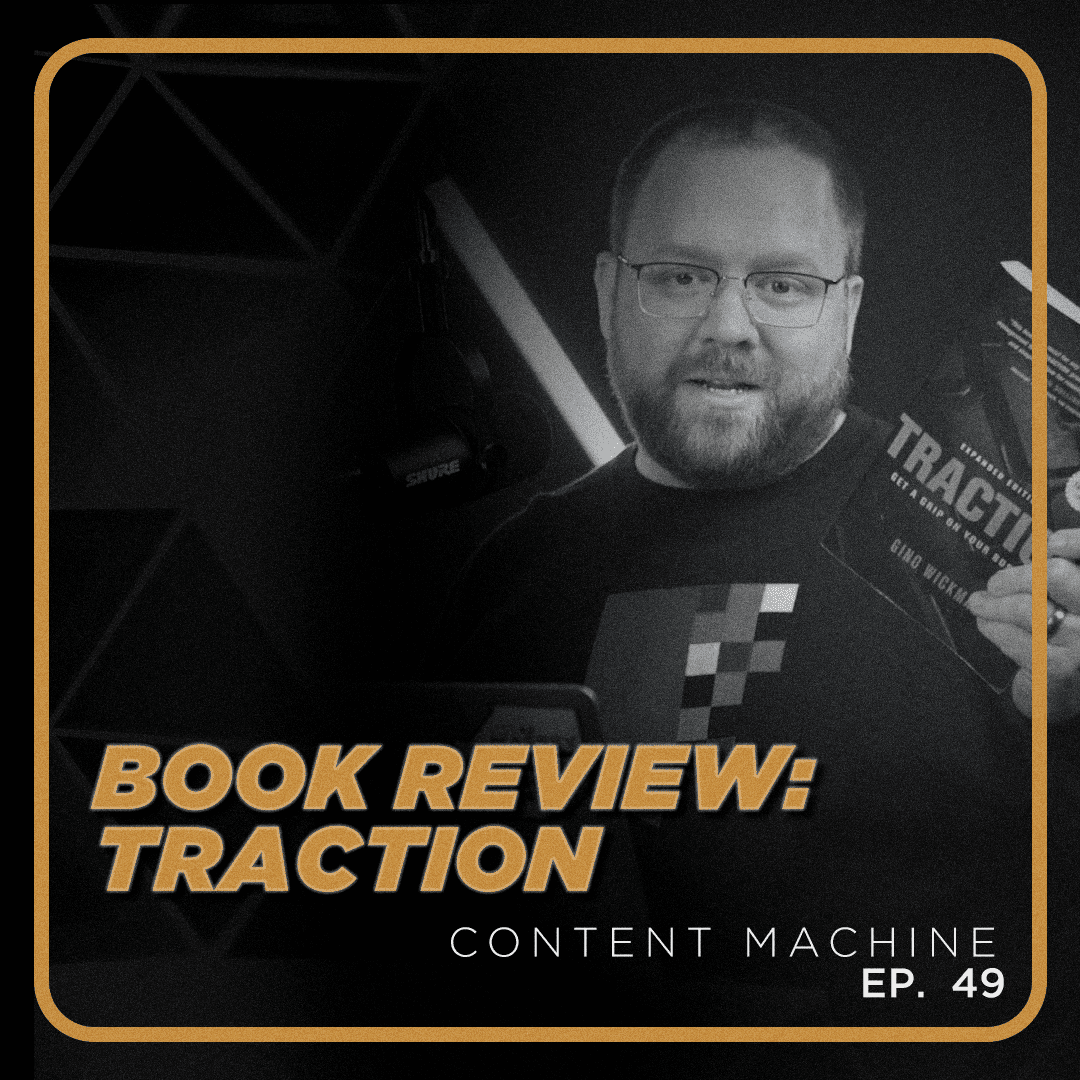Thank you all for showing up. It looks like we’ve got the chat function figured out. In interest of time, we’re going to jump right into it because today we’re talking about time management. Thank you all for joining. We’re going to talk about three phases in this seminar today. There’s going to be philosophically about time management. There’s going to be talking about calendars specifically. Then we’re going to talk about some really practical implications of things that I’ve learned in the last 10 years of owning my own business about how to maximize my time. Let’s start philosophically. When we think about time management, we want to think about the why on some of those things. Why do we want to manage our time? Why is that important? But the first philosophical thing that I want to talk about is, and this may be a surprise to you, is really rest. And so I’m a big believer in rest, and our goal should not be just to maximize the time that we have to work, but working effectively within that time. And so what does that mean? It’s not just like, can I have more hours to get stuff done?
But can I be more effective in those hours that I do have? And I’m a big believer that if you are taking breaks and having rest, you’re going to be more effective during the remaining hours that you’re working. And so I wanted to anchor our conversation in that because I think it’s something that a lot of people overlook when they’re thinking about time management. A couple of other things about rest. One of my favorite authors in a podcast, or I really enjoy, is Blair Enz. He’s the author of The Win Without Pitching Manifesto. And he said, Time off for the entrepreneur is not a reward for hard work. It’s a recharge time required for your creativity and energy needed to do your job. Prioritize it ahead of everything else. Now, That may not work for everybody. You could be under a deadline or something. There could be other issues there. But in general, I find that I’m more ready to work Monday morning if I’ve taken Sunday off. I’m more ready to work every morning if I have the evening off with my family. And ready to work means I have the energy to do it, I have the focus to do it, and I’m not getting close to being burnt out.
So rest gives us the energy to work, and we work better rest, and rest gives additional meaning to work. Because I love my work, and many of you probably do it as well, but what are things that add meaning to that work? And things that give us meaning to that are things that happen outside of work. Rest, doing things that we enjoy, like audiobooks or gaming, like Michael mentioned in the chat, is that it helps add value to what you’re doing in your work and helps you stay motivated. Finding time off. There’s some biblical basis for this, but I’m also a big believer in just one full day off a week. For me, that’s Sunday. Very rarely will you find me doing anything Adelsberger marketing related on a Sunday. Occasionally, I have customers who are churches, and so that prevents that. But having a day off that I avoid doing any work allows me to disengage, and I feel ready for Monday morning when it comes because I’ve had to recharge my batteries. Days that that doesn’t happen, some days that I don’t get off or I may be too busy with other things, I can feel that really heavily the next morning.
Then I think a similar principle applies through your day for your normal work day. Going nonstop will have diminishing returns at some point. And so whether that be checking out for lunch or having a networking lunch that maybe is a little bit less of an effort or less stressful for you, or using a to take small breaks throughout the day, which is something I’m a big believer in, giving you a couple of opportunities to get throughout the rest of the day, which will help you to do more work in the long run and better work in the long run. The next part of the philosophical component is, why are you managing your time? I’m a big believer in introspection and thinking about why we do things and how we feel about certain things. Why are you managing your time? It can help motivate you to make the changes that you need to make. A couple of reasons that you might be thinking about why to manage your time. Maybe you have too much work to do. There’s too many demands facing you. Maybe you have big projects to work on, so you need times of dedicated, focused focus to ship a product or finish a writing assignment or whatever it may be, and you need to find more time for that.
Maybe you’re struggling with work-life balance and you want to be there more for your kids and your family or your friends. And so maybe managing time, that’s maybe your motivator. And maybe you’re trying to build a different future for you and your family. So maybe you’re working before or after work or at lunch breaks to achieve a goal beyond your normal work. And so when we think about why we’re managing our time, it’s an anchor that we can go back to to say, I’m making changes in how I’m doing this, or I’m cutting out distractions when I’m doing this so that I can accomplish and establish these things that are important to me. The next component is a classic time management question: what’s important versus what’s urgent? Now, one thing I want to start with is, who defines that for you? Some people, like myself, I get to largely define that for myself because I’m an entrepreneur and I don’t have anybody telling me what to work on and when. But for example, people on my team, I help define what’s urgent and what’s important for them. And so How do we separate that out?
Well, urgent is like it’s on fire and it’s in your front lawn and you need to take care of it before it burns the house down. A decent portion of my day is dealing with urgent things. Important is generally something more important in the long term. In the business world, I compare this to working on a business instead of working in the business. For me, working on the business is the thing that helps deliver long long term value. So in building a network and building connections and helping promote the business or working on the business, this webinar, for me, is working on the business. This webinar for me is working on the business, and I have dedicated Mondays to almost exclusively working on our business. So our staff meetings are on Monday. My one-on-one with my team is on Monday. I wrote most of this webinar on a Monday because that’s time I’ve set aside to just work on the business. The rest of the week, I could be working in the business. That could be writing copy for a website or running a strategy session or writing a strategy report. The big component there is if you’re not making time for the important and you’re only working on the urgent, you’re limiting your long-term potential.
That may look different based on what your role is. You might have a role that’s just saying you need to work on what’s urgent. But ideally, and I am in a good workplace, everybody gets an opportunity to work on important things so that over the course of time, they can all improve. And then also, just a little soapbox. I’m really tired of people who say they’re too busy for stuff. I’m as busy as most human beings, if not more so. And when you say yes and then don’t follow up on it, it’s not because you are too busy, it’s generally because you didn’t make it a priority enough. And so when you think about something urgent and important and you think about your commitments, it’s all about what you prioritize enough to keep your word. The next section on the component of philosophy is knowing thyself. Thinking about when you as a person, when do you work best? I work best in the mornings. I can get a lot done before noon, and then I’m more tired in the afternoon. I try to shift meetings to the afternoon so that I can get better work done in the morning for myself and for our business and for our clients.
So when do you work best? You might be a late night person and an afternoon person. I have worked on rearranging my life to get me better working hours in the morning so that I can get more done. And I also know that if I don’t go to bed by 9:30, I’m going to be in a bad spot the next day. So I have initially cut out many things in my life to make sure that I can do that. Also, Also knowing yourself, what does rest look like for you? Is that going for a bike ride? Is that going for a hike? Is that watching a movie? Is that cooking a meal? What does rest look like for you? And can you figure out what that is and the most restful things you can do, then work that into your schedule? Another thing about knowing thyself is, what are distractions for you? Now, we’ll talk more about distractions in a moment. But the question is, What are things that are preventing you from optimizing your time? There’s a lot of them in this current culture. Then the power of no and yes. So yes, it’s a classic that every time you say yes to something, it’s a no to something else.
When you think about what you are doing and you’re saying yes to everything, you’re going to end up saying no to other things because you are capitalizing on the time that you have. You only have so much time. That’s a classic thing, but a lot of people need some instruction in that. Then finally, when do you need a break? Burnout is a real thing. I’ve dealt with burnout before, and I work a lot. Can you do maintenance on yourself to help the burnout be delayed, or can you examine what is causing that burnout? A lot of times, for me, it usually goes back to, I’ve had too many things required of me that I’m trying to accomplish, or I’ve gone too long without breaks and I’ve pushed too hard. And so trying to examine those opportunities to say, How does that work out for myself? It’s hard to give you a blanket statement on all those things because it’s going to change a little bit for each person. The next thing is we want to know the difference between proactive and reactive on your scheduling and on your time management. Management. Throughout the course of the day, regardless of who you are or what your job is, your schedule is likely to be torn to shreds before too long.
And so at that point, you become reactive to what’s happening around you instead of proactive. And my goal each day is to push back that event horizon as far as possible. How can I get as much time where I’m in charge of the schedule, where I’m being proactive and working ahead of things before people start getting a hold of me and changing my priority list. And so I start early in the day. I have a ridiculous schedule. I don’t recommend it for many people. But when you think about how to start The earlier you start, the less likely people are going to bother you. And things like turning your email notifications off and making sure that you block time off on your schedule to get things done. And then I also encourage you to build buffers into your time management zones so that if something does start to go wrong, you can have time to get back on schedule. When I used to work in a real physical building in a company, I was usually the first one in the building. Besides feeling like you’re cooler than everybody else, you also have an opportunity to be proactive on your day and be ahead of everybody else.
Then the communication around that can be really helpful as long as you work together with your people. The last component on the philosophical thing is we’ve talked about why we wanted to have management, but we should also think about what our goals for each day are. Sometimes in some of our works, and I know some of the people in the chat in the attendee list, some of our goals, sometimes it’s hard to know if we’ve been successful on any given day. That can be demoralizing for me as I’m sure it can be for you. Each day in my daily planner, which we’ll take a look at in a minute, I set out three goals for that day. I try to remind myself, if I’ve accomplished these three things that I’ve done well for that day, and that same mentality can apply to the entire week, what are some of the things that I have to accomplish this week? Knowing that if I accomplish them, I’ve done good work. Then taking that out, we like to think about things in a 90-day framework. What will make this quarter successful? Last year, we started developing our EOS framework.
If you haven’t heard of EOS, it’s a great book for leadership development and for working on your organization instead of just in your organization. Eos wants you to break it down and look at a 10-year goal in 90-day increments, which seems like a lot of craziness and planning, but it’s really not. It gives you an opportunity to get We started there. We have company goals in 90-day increments now. We haven’t hit all of those, but that helps us get to the future that we’re trying to get to. Something you should think about, is this calendar? Is schedule helping me to be more of who I want to be? Then take that information and go back to our reason for managing our time. And then hopefully, you’ll make sense of this. Is this calendar reflective of the fact that I’m going to drink some water? You’re free to put questions in the chat. Chris is going to help us manage those. And then we’ll move on to the next segment, which is the super exciting section of calendaring. Calendering is not fun. I don’t know that anybody gets super jazzed about it, but we’re talking about time management, so we have to do it.
I think of calendering in two components. The first one is the calendar versus schedule. Now, I use two things to manage my time every day. One is my digital calendar, which we use Google Calendar within our company. Then I use a written schedule every day to help block out those individual moments of tasks that we need to work on. For our digital calendar, what goes on there? That’s for things like appointments and maybe some regular scheduled block lots of time, things that are super crucial and urgent that if you don’t put on the calendar, you could get disrupted from, so finishing a report on time. But the more things are on that, you might start to miss the value of it. This is actually what my calendar looks like next week. And normally this calendar is a lot more chaotic because it has all of our team members on it and my personal calendar and my wife’s calendar. But as you can see, most things on here are appointments except for a couple of components. Internal Mondays, like I mentioned a little while ago. Internal Mondays is when I put that time on the calendar on repeat every Monday, and we do our very best to not have any client meetings during those times.
Very rarely does it happen. If there’s some specific need, we will do that, but it’s very rare. And so we’ll have our staff meeting. I’ll have a one-on-one with some of my team members. I’m recording podcasts that day, and reviewing ads for future webinars because there’s two more of these coming up in this series. But the other time block on there is K-A sales time. And so this is a pretty sensitive period of time, although I’m actually going to be out for part of it for something for my children. But that is time that I have locked in so that I make sure that I’m doing the things that I have to do, which is business development for our company. I’m spending a couple of hours on that every week, and I work on doing that there. But the rest of those things are appointments where we are going to someone’s office, we’re having a Zoom, we are having meetings with outside people. We try to keep all of those things on the calendar. Krista, who is awesome and helps us manage all of our projects in our timeline, when she’s trying to schedule a new strategy session or a new meeting, she can access that and see where our meetings are.
So it’s very clear there. I also don’t want to get confused here about what I have to be at and what I need to be doing, if that distinction makes any sense. I have to be doing sales development, but Krista It shows that Mondays and Tuesdays, if we absolutely had to, we could schedule something, but we try not to. But I have to be at that kid’s appointment. I have to be at that industrial strategy session. And so the rest of that time is left open, and I manage that on a time-blocking microschedule. What does that mean? We love time-blocking. If you’ve got a to-do list, which we’ll talk about in a second, you need to be able to take those tasks and put them on time. Because if you don’t have time dedicated for those tasks, nothing is going to happen. For me, each day I use this, it originated in the best self journal, which is a paper journal that I can recommend to people. But I got a remarkable tablet I built a few years ago. I really love it. If you’ve been in any meetings with me, you know that I really love it.
I’ve created a PDF version of this document, and there’ll be a link in a second where you can download some of my best self journal files or my knockoff best self journal files. The print book is awesome. I just do everything in this remarkable journal. And so what you see here is there’s an opportunity for gratitude and goals for the year, longer term goals, usually 90 day goals, but then three big targets for the day. And if I’ve done all three of those things, I will know that I’ve done well that day. The thing I really want to focus on is the time blocking. So this was actually my time blocking for today. And so when I got up at 4:15 in the morning, from 4:30 to 5:30, I was working on webinar prep. I was rehearsing this, working on my slides, making sure that everything was good to go. And then I went for a run and did what I call my full English breakfast because I like to name things. And so that’s a list of things that I do for myself in the morning, read my Bible and pray and read a journal or read some education material, and then get ready to go.
And then I’ve blocked time throughout my calendar to work on specific projects for specific customers. I know that after this, I’m going to be wiped. I’m going to be pretty exhausted when I’m done with this. I’ve locked in time to go for a walk and get a little bit of rest before I dive back into work for specific customers. Sometimes I get more detailed than this. I would say exactly what it is I’m doing for ATA, but I didn’t want to put that on there because I was sharing this today. Then I use this next to the annual celebration. I had a note about DNS because we have some website going live this week, and so I needed to just make a moment to go check in on those. If you don’t have something booked, if you don’t have time for it booked, are you going to be able to do it? Well, likely not. My encouragement would be to make sure that you are time-blocking. When I switched to this type of time management, it allowed me to really structure things in a better manner. The other thing this allows you to do is to book time in your day for long term strategic important tasks above some of the urgent tasks.
And the earlier in the day, the better that’s going to be because you’re still being proactive to your schedule instead of reactive to your schedule. And then one note here at the bottom, I always have time at the end of the day for email and planning. We’ll talk more about this in a second, but I’m a big believer in planning the next day ahead of time. And so I always book time at the end of the day to try to do that. This is a QR code that will take you to copies of some of the files I use on my remarkable PDF. It could be something that you could use and print off or look at as an example. So feel free to take a look at those. Now, the other thing about calendaring is that I also believe in work-life balance and calendaring. When you are working, you can book when you’re not working. There was a time in my life where we were crazy enough that I would book time for each of my kids on a regular basis so I could spend one-on-one time with them because of just how crazy everything else was.
Some people think that’s weird or disrespectful because you’re like, Do you really have to book time for your kids? Well, yeah, you book time for things that are important to you. I make time for my family and I make sure that that’s part of my daily schedule in my calendar. If I slide back here, you can’t see. Here. After five, this is booked for the family. We’ve got something we’re doing tonight as a family. I didn’t want to put that on there, but I will book things for my family on my calendar so that I can make sure that I’m taking time for them. Time management also applies to your private life as much as it applies to your work life. It’s because you have a lot of meaningful things in your private life and you want to make them a priority as well. I’m going to head into the last section here, the practical Q&A in the chat. I see one question came in. Michael, I’m not super sure how agile works exactly. I’m familiar with the process a little bit. Eos is not as changing. It’s like setting goals every 90 days and then reporting on them.
An accountability structure is probably a better phrase for it. Traction is the name of the book. I’d highly recommend it. While I drink some water, just a couple of promo pieces here. We’ve got a podcast that you might enjoy called the Content Machine Podcast. They’re a lot shorter than what I’m doing today. They’re usually 10 to 15 minutes. If you would like to sign up for free marketing advice from me, the co has office hours and they have a bunch of local experts who do different types of expertise that you can join and ask them questions for free. Every month, I’m usually on the second Tuesday, I think I am. But you can go to the @theCo.com to find that and sign up for those. Then also, my company does marketing. If you are interested in maybe some marketing strategy or a new website or videography or branding or something of that nature. We’d love to talk to you about that. Remember to put questions in the chat, and there’ll be a little bit of time for Q&A, and we’re in the last leg of this here. The last leg of this stool is the practical elements of time management.
And one of the big things is task management. And so to manage your time, you have to know what you have to do. Now, some people’s lives may be a little bit more complicated than that, but a lot of times you can get really close to knowing what you have to do. So taking time to plan out all the tasks for a project and putting those on a calendar somewhere is a key component to having successful time management. And I suggest you have a tool for doing SmartTask that we use. I don’t know that I’d recommend it, but Asana or monday. Com or don’tForgetTheMilk, I think it’s what it’s called. But you can also just use the Notes app on your phone to create a checklist. Now, that doesn’t do recurring tasks, but a lot of those tools can have weekly, daily, or weekly, or monthly, or quarterly, or yearly recurring tasks, which can be really helpful for things like, Oh, don’t forget to pay the taxes, or, Hey, it’s the first First week of October, have we started our internship recruitment process? And then remembering that a year from now. Having those tools and having those tasks laid out helps you to keep on top of what you need to be doing and allows you to build a schedule. I found those things.
I spend a lot of time with my task manager where I’m saying, Okay, I’m going to be able to get these things done today. I’m going to have to move everything else to the next day, or I’ve got to reprioritize this and say, Okay, these got to move, or I’m going to have to skip lunch. I’m going to have to work on these things. So make lots of notes or schedule them as needed, but keep in mind hard deadlines. But if you don’t have some task management software, you are going to be in trouble. The second thing is to plan the night before. A good morning starts the night before. If you want to have a good day, you have to have a good morning. If it’s a good morning, you have to really start the night before. My successful Thursday started last night at about 8:30. I know that sounds a little weird, but if I watch TV too late, if I stay on my phone too late, if I have caffeine or sugar too late, it’s going to affect my sleep. And if I affect When I sleep, I’m going to have a hard time first thing in the morning, getting up and working and running and doing all those things.
And if I don’t work out and run and do work in the morning, the rest of my day is not as optimal as it could be. And so planning your night The night before, you start to make lifestyle decisions that help you have a better set up for the next day. But then also, I plan out my day the next day before the end of the day. It doesn’t take me but 10 minutes to look through my task manager and say, Okay, these are the appointments I have in my calendar. Then I go through and I fill out that journal with time blocks. Tomorrow is going to be great because I have no appointments tomorrow. That just means I’m going to get energy. I’m just going to crack out work all day, which I’m excited about. Occasionally, you get an opportunity to do those. I don’t get them very often. I’m going to get a lot of important work done tomorrow and not so much as essentially urgent work. But if you can plan your day out the night before and then do that, and you did that every day, you could conquer the world.
I have days where I fail to do that, and that’s why I haven’t conquered the world yet. Then when you’re thinking about prioritizing that day, we’ve talked about being proactive versus reactive. Mark Twain has a great quote. If it’s your job to eat a frog, it’s best to do it first thing in the morning. And if it’s your job to eat two frogs, it’s best to eat the biggest one first. Now, it’s a humorous quote, of course, but also a huge amount of wisdom in that. Because we’re able to be proactive when we’re doing things first thing in the morning, also, I like to learn about willpower and how those things work. You have more willpower at the first thing in the morning at the beginning of the day. If you have a really difficult thing that you need to do during the day, maybe it’s like writing a report that you don’t want to write or emailing a customer that you’re mad at or doing something of those natures or something that requires a lot of strategic thinking, it’s best to do it first thing in the morning. You’re fresher, you’ve got more willpower, you’re ready to conquer those things.
If you’ve got two hard things to do, the sooner you get those big ones done, the better you’re going to feel about your day and have more opportunity to be successful in the long run. Then the second thing is clarity brings power. This is our company theme this year. But if you know what your goals are for the day, if you know, if you’ve set your time blocking what your three goals for the day are, you’re going to know what you’re trying to accomplish. And you’re not going to waste time debating about what should I work on next because you’re going to have a list of things that you need to work on. Clarity is something that’s going to be super helpful in helping you manage your time clearly. But this is the biggest warning. Distractions are death, at least unnecessary ones, anyhow. So when you think about distractions, you need to put your blinders on. Now, this is a little bit funny. For a long time, growing up, I remembered this random beer commercial about a horse of blinders on, and I could never find it, could never figure out what it was.
One day, I found it. This is real quick. Let’s see if it’ll play. Here we go. I submit to you Miller’s record. Miller The Great Tasting Beer that’s less filling. Miller Genuine Draft, a beer with genuine flavor that’s cold, filtered, smooth. Clear beer. Well, Miller clearly has a history of progressive decision making, and I would ask the king of beers what he would say to Why won’t my opponent debate this issue? Is it because he’s a horse or is it because he’s got blinders on? No peripheral vision. Look at me. Both sides. Choose taste. I love that commercial because it’s funny. It pokes fun at an existing brand. But also blinders are awesome. You need to put your blinders on if you want to manage your time well. What does that mean? One, I don’t understand how people have a ping on their emails every time they get an email. That’s senseless to me. Why would you want a noise every time you got an email? There’s so many distractions in the inbox that are not things that you have to do. And so think about that process. Do you really? Do you really want to get a buzz on your phone every time you get a Facebook comment?
Do you really want to get a text message alert every time you get a text message from everybody that might send you a text message? My answer to that is no. There’s a great book I’d recommend. It’s called The Attention Merchants, and it’s all about the way our attention works and how it’s been so divided in our current culture because of all the forms of technology around us. But being able to remove things that take you out of your work as much as you can is one of the key things you’re going to want to do to be successful. Distractions are death. So can you hide your email inbox? You know what? I have to hide my inbox and my desktop set up here because I know that if I keep seeing my inbox, I’m going to want to respond to every email that comes in. I don’t need to do that the second they come in. I need to be able to manage them and look at them over and over. Over time. The other thing that’s really helpful to me is when I hide my phone from myself. I know this sounds dumb, but if I put my phone outside of my immediate reach when I’m working, as silly as that sounds, it really cuts down the amount of times that I pick up my phone to look to see if I have a notification.
And some of that is just a lack of self-control within myself. But I found that if I just put it out of reach, I can be more focused on what I’m doing at the moment. Speaking of phones, one of the nice things that Apple has done in the last couple of iOS updates, and they probably have something similar to this in Android, is called focus modes. I can set my phone to a work mode that only allows my employees, and I can set exactly who I want to be able to reach out to me at any given moment. I get a bunch of junk calls every day, and I refuse to answer them. So if it’s not saving my phone, I don’t answer. And then my team is able to text me and reach out to me because I absolutely need to get to them. And then a couple of other people that may have specific reasons for needing to get out and reach out to have access to me as well. But most people, it won’t buzz or anything. And it allows me to stay focused because I have a lot of people trying to text me and email me and call me.
And then I check my phone every hour or every 30 minutes or every couple of hours, and I make sure that I get back to people in a timely manner. But it prevents me from working on a subject and then being torn away from that instantaneously. That’s something that we really need to work on as a culture. Screen time has been introduced in iOS, and they may have something like that on Android, but it’s like a truth-telling statistic. It’s like, How much time did I really spend on this app today? And many of us, it’s going to be disappointing on how much time you’re actually spending on that statistic. So I’d encourage you to turn on screen time. On my computer, there is a great plugin that works with the Pomodoro method called Strict Workflow, and it allows you to block out websites that are distracting to you during your on working cycles. Things like that are… You need to go back to knowing thyself, what are your individual triggers that prevent you from being effective time management-wise? It’s not just like, Oh, I really like this, or it could be a good thing. There could be nice things about texting your friends in the middle of the day.
But if it’s preventing you from getting your work done, they can wait a little bit because we have other reasons that we want to get our work done. Maybe we want to be able to get done so we can go home to our families or we’re working on a better future for ourselves. That’s why anchoring it is why it’s so important. Then finally, I like paper and digital, and so our time blocking is done on my remarkable tablet, as I mentioned earlier. Then I use the digital calendar for shared activities and appointments. Using both of those and keeping those both up to date is one of the things that I think is super important and gives you a chance to be successful in the long run. That is the webinar on time management. If you have additional questions, now would be a great time to ask those. If you don’t, we have two more webinars coming up in November and December. Those are on our website. One is on brainstorming and one is on 90 day content planning. We’d love to have you join us for both of those, but I don’t see any additional questions coming in.
Here’s a question that’s come in from Timothy. How would you recommend discerning when you work best? I think depending on what your type of work is, maybe how that affects you. You should probably Just over the course of a week, try to do your main work task for, let’s say, writing is really tiring to me. If you want to try to do work tasks, try it at different times throughout the week and see if you can sense any difference in the delivery of that test from you. If it’s design work and you find that afternoons are better because you’ve had coffee and you’ve had lunch and you’ve gotten fully awake, but test it. Make notes on it. Be like, How did this session go? Did I feel like I was successful in this or did I feel like I could have done better? Or more likely, comparatively, this afternoon versus this morning, I did a better job writing. If that’s true over a course of time, I would work on structuring that to optimize for that. Do you ever find that using tools or notes leads to scope creep? I’m not sure if I understand your question.
Do I feel like the tools get out of hand and they’re too much to manage? Depending on how frequently I have to use them. I’m in a position where I have come to fully grasp that if I do not offload the information from my brain to my phone or some digital device, it will disappear. I have a pretty good memory, but I have just decided that if I don’t make a reminder on my phone, if I don’t make a note in my notes, I may as well just not even worry about it. The great thing about that is one, it’s written down somewhere and you can stop having to think about it instead of trying to remind yourself every 10 minutes that I have to write that down. I would be careful about the tools that you’re using. The best tool is the one you can use. If you are trying to start up a super fancy task management software and you are not dedicated to it or the friction of using it is too high, you’re going to fail. That’s a great question because it illuminates something that I didn’t really talk about.
It’s like, you need to have a tool that you’re going to use. Finding that tool that you’re going to use because it’s easy and it’s accessible and it’s not going to be too much of a distraction is some good rubrics for helping pick that tool. Too fancy of a tool or too complicated or hard to use, you’re not going to use it and it’s going to be unsuccessful. Then you’re going to be like, Kevin told me to do this, and it’s failed. It’s his fault. No, I would encourage you to find something that is useful is easy to use and works with the way you work. We’ve had this issue in our team some, where we’ve instituted tools and not everybody’s been jazzed about using them. We try to work through why that might be. But at some point in our company, it’s like, this is how we do things. If you work for yourself or in a smaller organization or you’re just organizing your own stuff, you have a lot more freedom in that. And there’s a lot of task management softwares. And so maybe even just start with a notes app on your phone and see if you can find out what you like about those things and then try to use them, try to find a tool that does those things better.
Thanks for the question. All right. Well, it looks like we’re going to get out of here early. Once again, thank you all for joining, and I hope this is useful. Feel free to shoot me emails if you have questions. And then a great way to keep up with our company is through our Content Machine podcast that’s available on all major podcast platforms. And then feel free to sign up for office hours and get some free consulting or just call us and we can talk about doing business together. So I appreciate all of your time, and I hope you have a great day. Thank you for your attention. I sincerely appreciate it.

